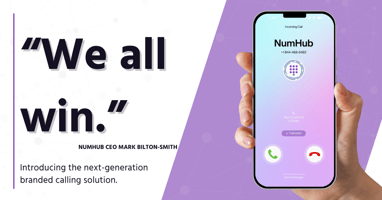In the fast-paced and increasingly digital world, call centers and businesses face a growing...
How Branded Calling Can Transform Business Communication
Revolutionizing Communication with Branded Caller ID
In today's digital world, businesses face an uphill battle when trying to reach customers through phone calls. The rampant increase in spam and fraudulent calls has made consumers wary, often leading to important calls going unanswered. However, a groundbreaking solution is emerging—branded calling. Also known as Branded Caller ID (BCID), this innovative tool is transforming how companies communicate by displaying the business's logo and verified information on a recipient's smartphone screen. This visual cue not only captures attention but also signifies authenticity, compelling recipients to answer calls they might otherwise ignore. By embracing this modern communication strategy, businesses can significantly increase their call answer rates, reportedly by nearly 70%.
Understanding the Trust-Building Mechanisms of Branded Calling
One of the core advantages of branded calling is its ability to build trust, a crucial element in customer relationships. In an era dominated by skepticism towards unknown numbers, branded calling offers a verified identity that reassures customers of the call's legitimacy. This trust factor is particularly vital in sectors like healthcare, finance, and customer service, where effective phone communication is essential. By embedding a data packet in the call path that verifies the caller's identity, branded calling reduces the anxiety associated with potentially fraudulent communications. This not only encourages customers to engage but also fosters a more trusting relationship between the business and its audience.
Overcoming Challenges in Implementing Branded Calling Solutions
Despite its potential, branded calling is not without challenges. The primary hurdle lies in the incomplete implementation of the STIR/SHAKEN framework, which is designed to authenticate caller identity and prevent spoofing. This gap can lead to data loss or alteration during the call path, compromising the integrity of branded calls. Furthermore, businesses often face limited control over STIR/SHAKEN certificates, which are usually managed by the originating service provider. This can result in inaccurate caller information, undermining the purpose of branded calling. To combat these issues, companies must adopt robust strategies to ensure the accuracy and security of their call data, such as partnering with trusted solutions that provide greater control over branded calling credentials.
Choosing the Right Partners for Effective Branded Calling
Selecting the right telecom partners is crucial for businesses aiming to implement effective branded calling solutions. Trusted providers prioritize security and compliance, which are essential in a landscape fraught with risks associated with the Least-Cost Routing (LCR) network. Calls often traverse multiple carriers, leaving room for data alteration. Collaborating with providers who emphasize secure call paths ensures the integrity of branded calls. These partnerships not only deliver accurate caller identities but also reinforce an organization's communication strategy against fraud and spam. By aligning with reliable partners, businesses can maximize the benefits of branded calling, enhancing trust and improving their overall communication efficacy.
In conclusion, branded calling represents a significant advancement in business communication, particularly in combating the challenges posed by spam and fraudulent calls. By understanding its trust-building mechanics, addressing implementation challenges, and choosing the right partners, businesses can leverage branded calling to transform their communication strategies, boost call answer rates, and build enduring trust with their customers. As the communication landscape continues to evolve, incorporating innovative solutions like branded calling will be indispensable for businesses seeking to maintain a competitive edge.



